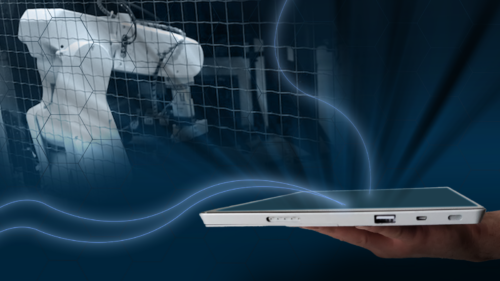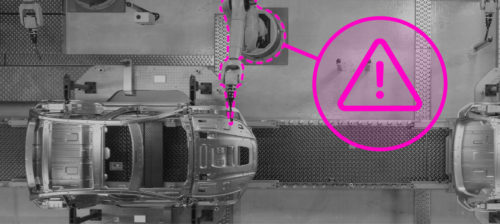Maintenance Tips & Tricks Winners
Winner of the 2003 'Maintenance Tip of the Year' is Mark Coomes, Ferro Corp., Evansville, IN. He received $1000 for his suggestion on how to lock out an airline under repair.
Sections: First place Second place Third place Entering the contest Participate in our 16th annual Tips & Tricks contest
Winner of the 2003 “Maintenance Tip of the Year” is Mark Coomes , Ferro Corp., Evansville, IN. He received $1000 for his suggestion on how to lock out an airline under repair. Runners-up are Mike Holmes , Halocarbon Products Corp., N. Augusta, SC, and Hal Hansen , Dayton, OH. Mr. Holmes presented a solution for retrieving objects at the bottom of a barrel of fluid and Mr. Hansen explained how to run wire above a suspended ceiling. They each received $250 for their suggestions.
First place
Disconnect lock out
Problem: A piece of equipment is fed by an air line with a quick disconnect fitting. How can the air line be locked out while repairs are being made?
Solution: Get a spare female quick disconnect that matches the one on the airline. Drill a hole for a lock to fit through. Connect the female disconnect and install the lock.
Contributor: Mark Coomes, Maintenance Supervisor, Ferro Corp., Evansville, IN
Second place
Gone fishin’
Problem: A tool or something else falls into a 55-gal drum of product. You can see it. Is there a way to retrieve the item without emptying out the drum?
Solution: Make a noose, similar to one a dogcatcher uses, out of 316 stainless steel tubing and TIG wire. Bend the end of the noose at an angle to the tubing. To grab the item, pull the TIG wire.
Contributor: Mike Holmes, Production Supervisor, Halocarbon Products Corp., N. Augusta, SC
Third place
Tennis anyone?
Problem: Sometimes you have to run a wire above a suspended ceiling where the distance is greater than 30 ft. Is there an easy way to run the wire without disturbing the tiles?
Solution: Run a piece of string through a tennis ball. Throw the ball to the point where you want the wire. If the ball falls short, an observer will note which tile bounced. Pull the wire with the string.
Contributor: Hal Hansen, Lau Industries, Dayton, OH
Entering the contest
Look around the plant, or call on your past experiences. Do you see a shortcut method for handling a maintenance problem, or recall a technique that solved a problem in the past? The ideas do not have to be rocket science or original with you. What is common knowledge or routine in one plant, industry, or area might be a revelation elsewhere.
If you come up with a good idea, send us a detailed explanation. State the problem that existed and present the solution provided by your tip. Drawings or color photographs visually depicting the idea are extremely important to the impact and understanding of the tip. Also include your name, title, company mail, and e-mail address, and daytime phone number.
Send your ideas to: Joe Foszcz, PLANT ENGINEERING , 2000 Clearwater Dr., Oak Brook, IL 60523.
Ideas can also be e-mailed to Joe Foszcz at jfoszcz@reedbusiness.com or faxed to 630-288-8781.
Participate in our 16th annual Tips & Tricks contest
Submit your tip no later than April 30, 2004 and you could win $1000.
Countless time-conserving, money-saving, aggravation-avoiding ideas for solving typical plant maintenance problems are used by PLANT ENGINEERING readers. Unfortunately, all too often the knowledge base of these inexpensive, easy-to-implement problem-solvers is not universal.
Sharing simple, shortcut maintenance methods or procedures with others in the profession is the basic intent of PLANT ENGINEERING magazine’s 16th annual “Tips & Tricks” article. Reader-submitted maintenance suggestions selected by our review committee will appear in the August 2004 issue. (Those not picked for that article will be considered for use in our monthly “Solutions” department).
In addition to submitting maintenance ideas, we want our readers to pick the “best” tip of 2004 from among those published. A reader service number will be assigned to each entry so you can vote for the five entrants you think are the most appropriate or practical for solving your maintenance problems.
The highest vote getter will be rewarded with $1000. The two runners-up will each receive $250. All other items published in “Tips & Tricks” and “Solutions” will earn $35.
Do you have experience and expertise with the topics mentioned in this content? You should consider contributing to our CFE Media editorial team and getting the recognition you and your company deserve. Click here to start this process.





